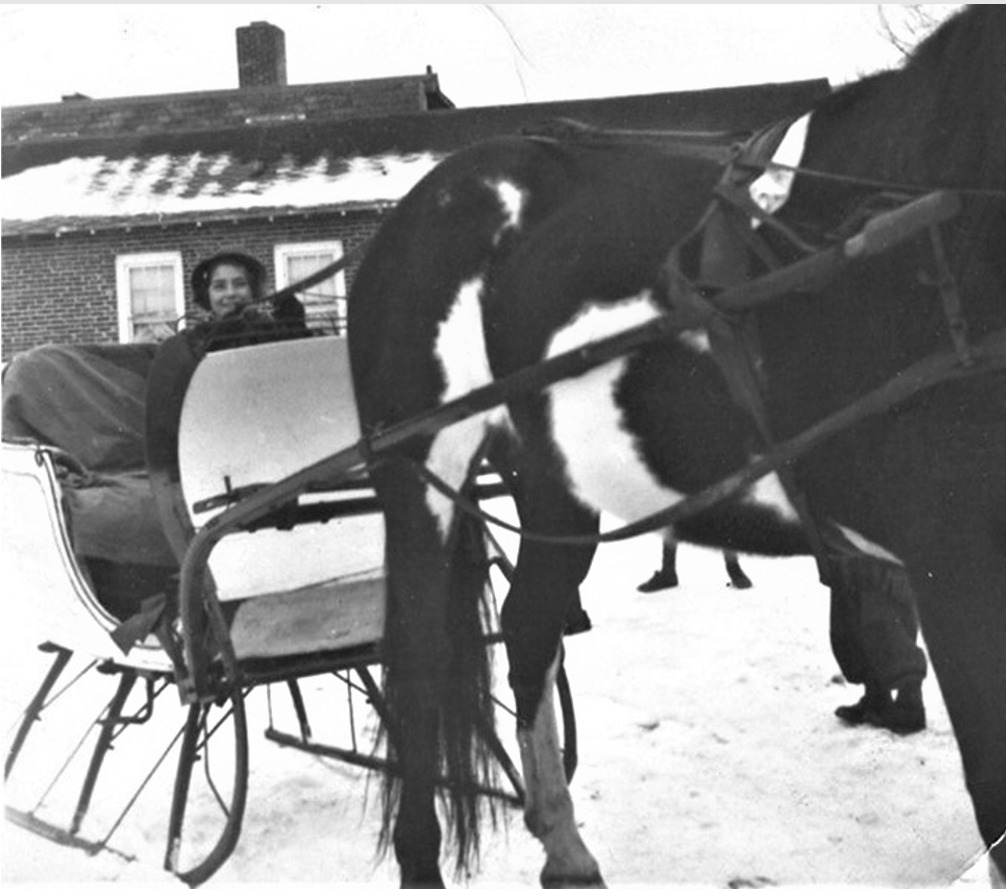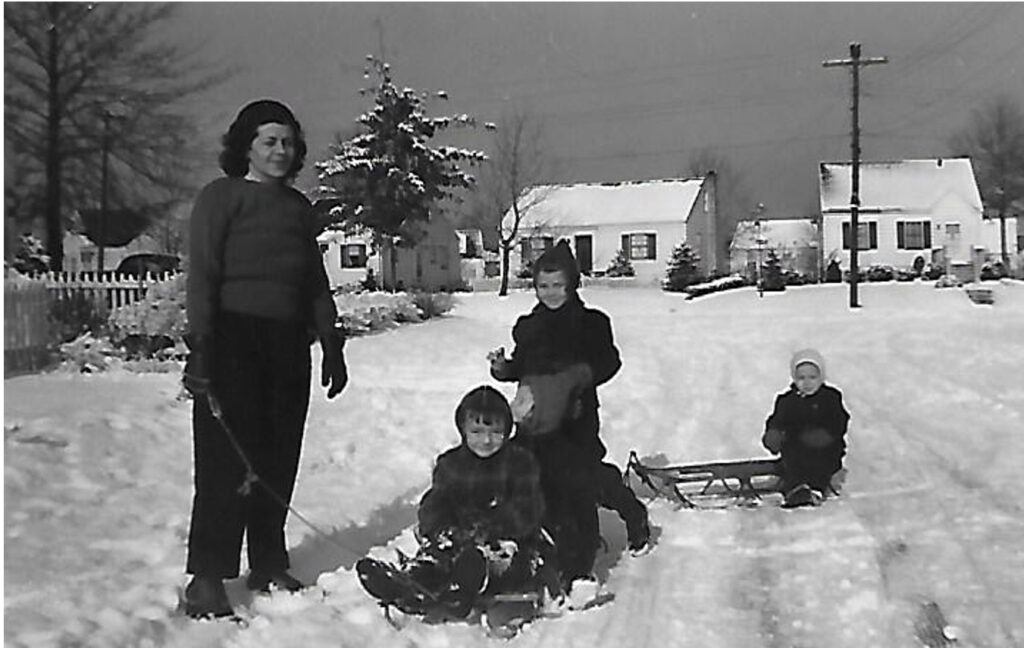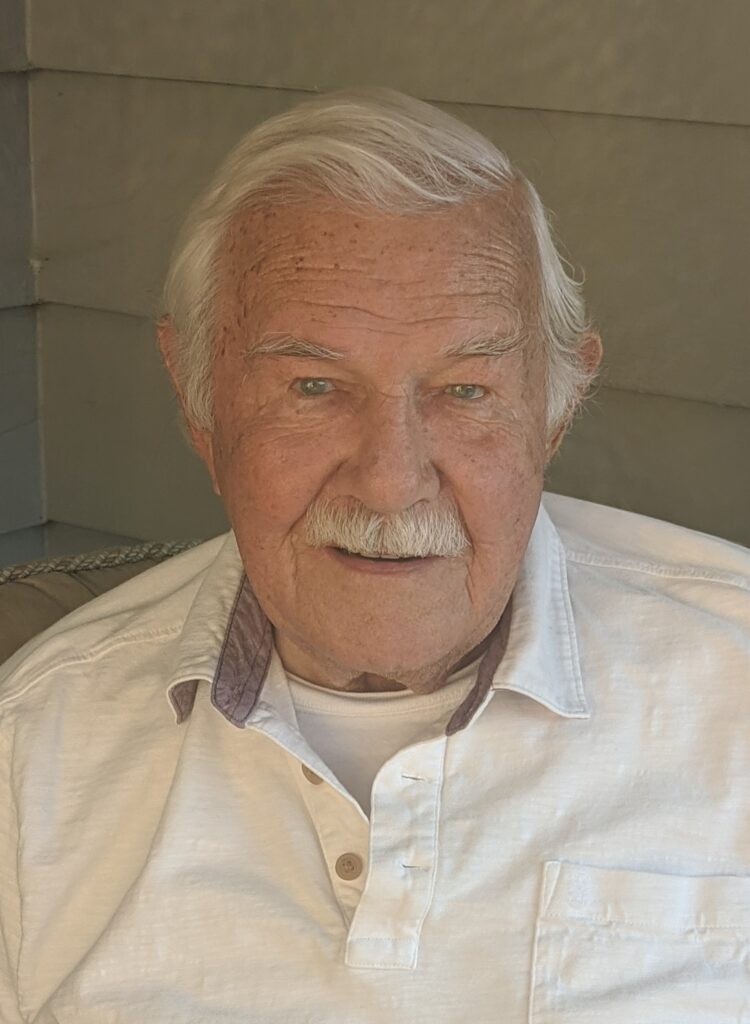
Winter time sleigh rides and more
Sleigh riding years ago in Kenilworth was a lot different. Some of those years-gone-by opportunities no longer exist for children and adults. Let’s look back.
Old timer Gene Coppola – now passed on – had a horse-drawn sleigh back in the 1930s that he completely rebuilt from a broken-down relic he obtained for free from a local trucking company. At the time Gene worked at the old Kensington Riding Stables on the Boulevard where the Wells Fargo Bank now sits. In 2016 Gene recalled, “During the winter I took people for horse-drawn sleigh rides from the Kensington Stables. I’d fill the sleigh with hay; drive the sleigh over to S. 21st St., go down Orange Ave. all the way over to Springfield Ave. by the Canoe Club. Then it was up Springfield Ave. to the Boulevard, and then back to the stables. I charged people two dollars each for a ride that took about an hour and covered a bit more than four miles. In winter I put my little sister Sally in the sleigh and gave her rides.”
Back in the 1940s and 1950s it seemed that all kids had a Flexible Flyer sleigh with metal runners and a steering bar at the front that you pressed against with your feet to get the sleigh to turn left or right. When snow fell, out to the street we’d go, pulling or pushing one another. “Faster and faster,” riders would shout to the puller or pusher. A real treat – although dangerous – was when someone’s dad would tie up with ropes a bunch of sleighs to his car’s rear bumper. The car tires were clad in bulky, noisy snow chains for traction. We’d climb aboard our Flexible Flyers and yell to the father, “Hurry up; hurry up; let’s go.” Some one’s dad shifted to first gear and we’d be off. It seemed like we were sledding at supersonic speed, but in reality, the car never exceeded 5 or 10 miles an hour. What a thrill when we turned a corner and the sleighs would swing out far to the side due to centrifugal force. When moms found out what a dad did, they’d chastise their husbands for towing kids up and down the streets.

Bob Allcroft, now 92 recalled with a chuckle, “When a car crept along trying to go up a hill, a bunch of us would dart out with our sleighs and grab onto the back bumper and get towed along on the snow-covered road. The last one to grab on got stuck behind the exhaust pipe.”
The best place in town to enjoy the snow was Galloping Hill Golf Course. Hundreds of adults and children from town and thousands more from all over would show up to take advantage of the hills and slopes. The steepest hill for sleigh rides was right where the Garden State Parkway runs alongside of Graceland Cemetery. It was packed with people. That was the steepest hill. That scary decline no longer exists as it was filled over by the Parkway itself.
Behind the club house was a fairly long hill that was a popular spot for toboggans. It was not uncommon for experienced tobogganers to advise first-time riders that the best and safest seat was at the very front of the toboggan. Truth be told, it was the worst possible seat. Whoever sat there received the full brunt of the snow being thrown up into the air by the rapidly descending toboggan. When the ride was over, the rookie victim easily could have passed as a twin of Frosty the Snowman.

There even was skiing on the golf course. Right behind the third tee once stood a tall water tank on four legs – the highest elevation on the course. Skiers would climb or latch on to a long rope to help them to the top of the hill. Then off they would go down the longest hill on the golf course maneuvering in and out between fellow skiers and sleigh riders who couldn’t resist the thrill of the extended ride. Then they journeyed back to the top to do it again and again.
Sometime in the 1970s the golf course was closed to snow lovers. Some theorize it was due to accidents and issues of liability. Whatever the reason, those days are just memories.
Research provided by Walter E. Boright, Ed. D., historian, and Historic Signs, Inc.
Persons with inquiries about this or other aspects of Kenilworth history may contact Dr. Boright atdrbori@aol.com or 908-256-5200.
